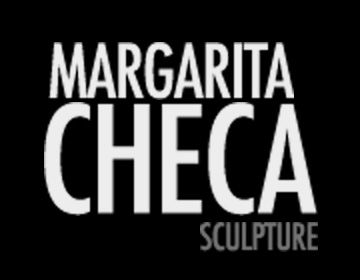Not fitting the mold
The Museum of Latin American Art
takes a look at four female sculptors
with widely diverging styles
in “A Woman’s Touch.”
By David Pagel
Special to The Times
A four-artist exhibition at the Museum of Latin American Art in Long Beach starts with a cliché and does not do much with it.
To its credit, “A Woman’s Touch: The Sculptures of Margarita Checa, Isabel de Obaldia, Susana Espinosa, and Peschel” refrains from pigeonholing diverse works by confining them to a restrictive category, as was the tendency fairly recently in theme shows. Instead, curator Eliud Alvarado unites the four artists’ carved, cast and molded figures under an idea that does not fit them very well.
In everyday language, “a woman’s touch” refers to a type of feminine finesse that both exasperates and fascinates men. Most men use the phrase to describe that “little something extra” they can’t, for the life of them, come up with to solve a problem. In guys’ eyes, it is the gracious savvy women have a knack for, which often makes men appear to be as socially sophisticated as Neanderthals.
In contrast, when women use the phrase, it is often spoken in playfully conspiratorial tones, as if to say, “We’ve got power too subtle for you guys to understand, much less mimic, and it is in your interest not to forget it.” This is often done with sexy self-consciousness, suggesting that the notion works best when it is not taken too seriously or treated as a universal truth or essential component of femininity.
One problem with the exhibition is that it is impossible to imagine any of its artists using this phrase to describe their works, either in terms of how they are made or the effects they have on viewers.
The majority of sculptures are constructed from materials that have been subjected to many intervening steps. As their substances have been transformed from inert matter to finished form, often by means of fire and complex chemical reactions, the touch of the hand – either male or female – is lost.
The two artists who work most directly with their materials depict figures whose tactility is far less significant than the deep reveries they are lost in. Checa, born in Lima, Peru, where she resides, turned to woodcarving when she lived in Costa Rica from 1992 to ’95. She used numerous tools to chisel, sand and polish her eight olive and mahogany sculptures, two of which are adorned with bullhorn and silver inlays. Whether standing, clutching a pet, slumped on a bench or adrift in a rowboat, her stylized men, women and children bend their big hairless heads forward, as if they carry the weight of the world on their slim shoulders, or are bowing in acts of supplication.
As a group, they resemble the offspring of E.T. and one of Botero’s sculptures of chubby rich people. The passive expressions of Checa’s self-reflective aliens convey neither blankness nor self-possession but world-weariness of cosmic dimensions.
The Orange County Register
Arts & Entertainment
Sunday, March 7, 2004
Back